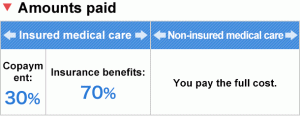What Insurances Does Parallel ENT Accept?
Parallel ENT Accept
Trinity Hunt Partners, a leading private equity firm, launched Parallel ENT & Allergy in July 2022. The company provides physician-centric management support for ear, nose and throat practices. The company has a commitment to high quality patient care, sustainable growth and a culture of respect. It offers scalable support services that promote long-term growth while preserving clinical autonomy for physicians.
Medicare is the federal government’s Parallel ENT health insurance program for people 65 and older, and people with disabilities. It covers doctor visits, medically necessary services, and preventative care.

Part A (hospital insurance) covers inpatient care (formally admitted only), skilled nursing, home health care and hospice services. Part B covers outpatient hospital services (including some providers’ office visits that are “in a hospital”), most provider office visits even if the office is not in a hospital, durable medical equipment and most professionally administered prescription drugs.
What Insurances Does Parallel ENT Accept?
The most important feature of Medicare is that it provides coverage for services that are generally considered to be medically necessary. However, Part A does not cover all of a beneficiary’s medical costs, and Medicare is often less generous than a private insurance plan or group retiree health benefits. It also includes a deductible, coinsurance and other out-of-pocket expenses that the beneficiary must pay. This is called the Medicare “split fee” model and it’s a big reason why Medicare has the highest cost of care in the country.
Health maintenance organizations, or HMOs, provide health insurance to people and businesses. They have agreements with doctors, hospitals and other healthcare providers that agree to accept a set payment level for services they provide. The cost of these plans is often lower than other health insurance options. They also tend to have low deductibles and copays.
In an HMO, you choose a primary care physician who coordinates your care using in-network doctors and hospitals. Most specialists require a referral from your primary care provider before they can be covered. Preferred provider organizations, or PPOs, differ from HMOs in that they typically allow you to see specialists without a PCP referral. However, you may have to pay more out-of-pocket if you use an out-of-network provider.
PPOs are among the most popular health insurance plans, offering more flexibility than HMOs. Members can go to any in-network provider they like, and do not need a referral from their primary care physician (PCP) to see a specialist. Despite their popularity, PPOs also have higher premiums than most other types of managed-care plans. They may also have deductibles and co-pays.
Some PPOs require pre-authorization for certain tests, procedures or medications. This is done to ensure that you are not getting unnecessary and expensive treatment. However, it is important to remember that most insurance plans will also cover some services and treatments outside of their preferred network. In addition, some plans will set limits on your out-of-pocket costs.
For example, some PPOs have an annual limit on in-network costs or a combined in-network and out-of-network limit. These limits may help prevent you from overpaying on medical costs if you have a serious illness or injury. There are many types of private insurance, from the traditional major medical plans to short-term health plans, fixed indemnity plans, and accident supplements. Some are regulated by the government while others are less so.